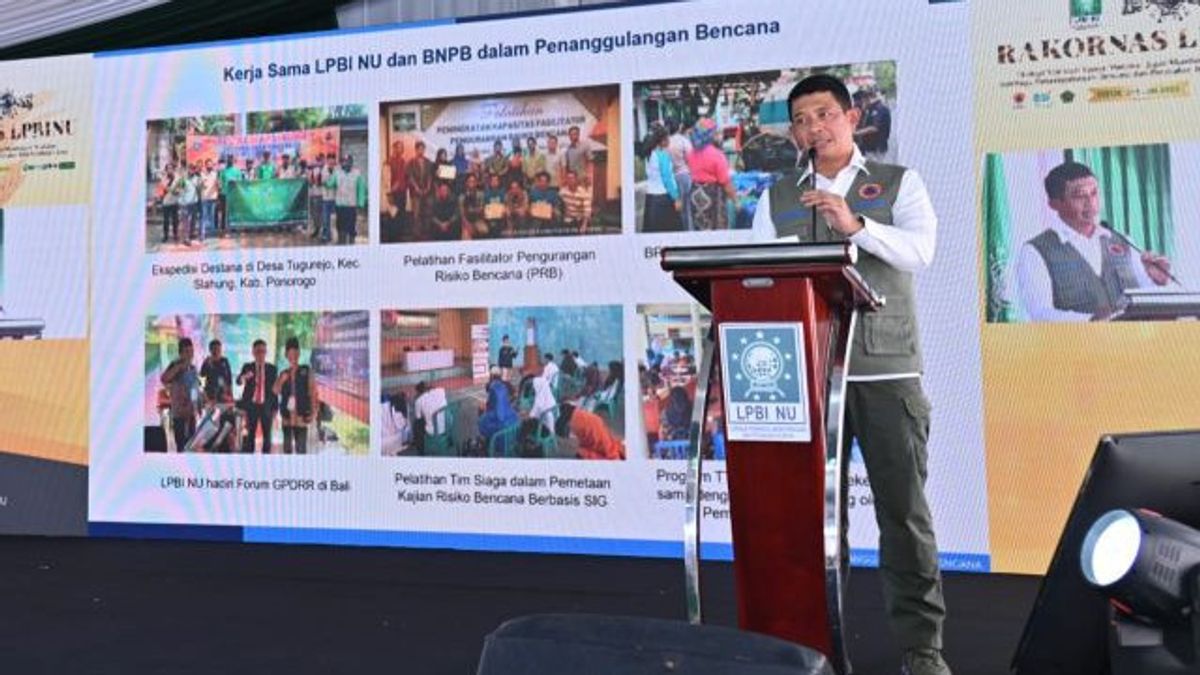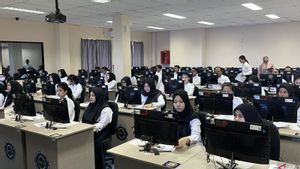JAKARTA - Head of the National Disaster Management Agency (BNPB) Lt. Gen. Suharyanto said that climate change that is currently happening in the world has the potential to trigger disaster events.
"Climate change has proven to increase the frequency of disaster events very drastically and more extreme," he said during the National Coordination Meeting of the Nahdlatul Ulama Institute for Disaster Management and Climate Change (LPBI NU) at the Alhamidiah Islamic Boarding School, Depok, West Java, reported by ANTARA, Saturday, June 3.
He said the global average temperature anomalous rise trend was directly proportional to the increase in disaster frequency, particularly since 1961.
Indonesia has also experienced an upward trend in the number of natural disasters with an average increase of up to 82 percent from 2010 to 2022.
"So, it is true that the increase in the average temperature anomaly both at the global and national levels causes an increase in the frequency of disasters, especially hydrometeorological disasters," he said.
From the data compiled by BNPB in the last five months in 2023, there have been 1,675 disasters.
"It happened to be dominated by hydrometeorological disasters by 99.1 percent, with details of 92.5 percent being wet hydrometeorological disasters and 6.6 percent being dry hydrometeorological disasters. The rest are geological and volcanoculological disasters," he said.
"For wet hydrometeorological disasters, the root of the main problem is urbanization which puts pressure on the downstream environment, and land conversion, both systematically and illegally, which reduces the capacity of absorption, both carbon and water, from upstream to downstream," said Suharyanto.
He said urbanization can also increase greenhouse gas emissions in the form of vehicle smoke disposal, factories or others, thus making air quality unhealthy.
Meanwhile, land conversion usually causes a reduction in vegetation which causes natural ability to absorb carbon to weaken and increase flood and landslide vulnerability because water is not optimally absorbed.
He said the impact of climate change does not only occur in upstream areas, increasing global temperatures triggers an upward trend in sea level.
"There has been an increase in the frequency of flood events from the sea (rob). It is exacerbated by the damage to coastal ecosystems," he said.
BNPB records in the last three years the number of tidal floods has increased by 46 percent from 35 incidents in 2020 to 75 incidents in 2022.
SEE ALSO:
In addition to wet hydrometeorology, dry hydrometeorological disasters have begun to occur in several regions in Indonesia.
"There has been an increase in the frequency of forest fires from week to week, so some areas have set an emergency alert status," he said.
Data from the Ministry of Environment and Forestry (KLHK) shows that the area of land affected by forest and land fires, especially peatlands, is directly proportional to the carbon emissions released.
In 2019 from 1.64 million Ha burned land released 624 million tons of carbon emissions into the air.
This is all a challenge for us together. How global and regional phenomena have real impacted an increase in the intensity of events and the impact of disasters at the local level," he said.
At the end of his remarks, Suharyanto appreciated the involvement of various elements of pentahelix in disaster management.
"To overcome the impact of climate change, we must support it together, because the Government will not be able to work optimally without the support of various elements of the nation, including LPBI NU as a disaster management community," he said.
The English, Chinese, Japanese, Arabic, and French versions are automatically generated by the AI. So there may still be inaccuracies in translating, please always see Indonesian as our main language. (system supported by DigitalSiber.id)


















